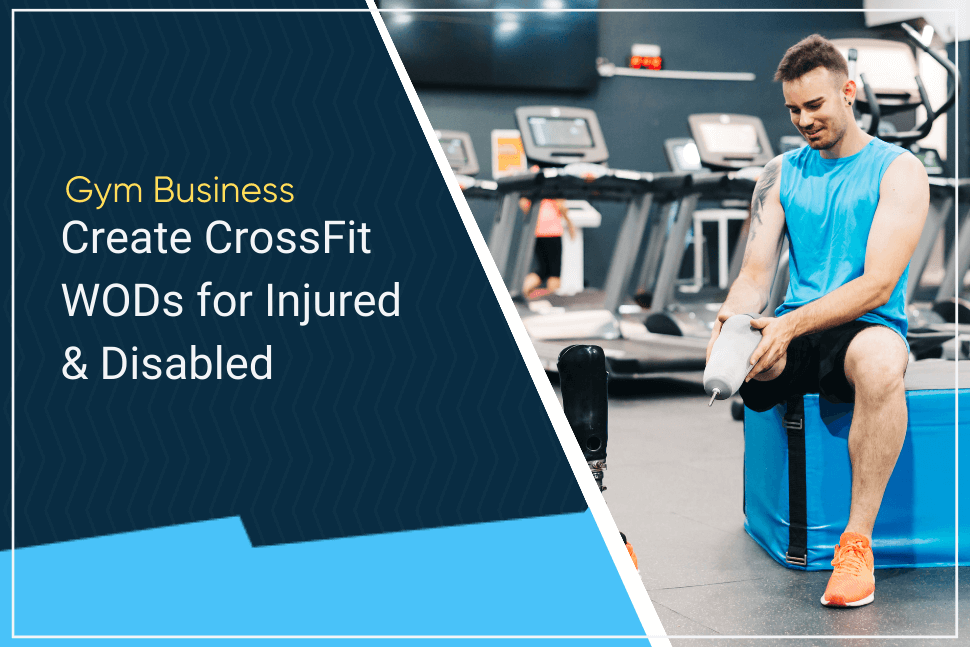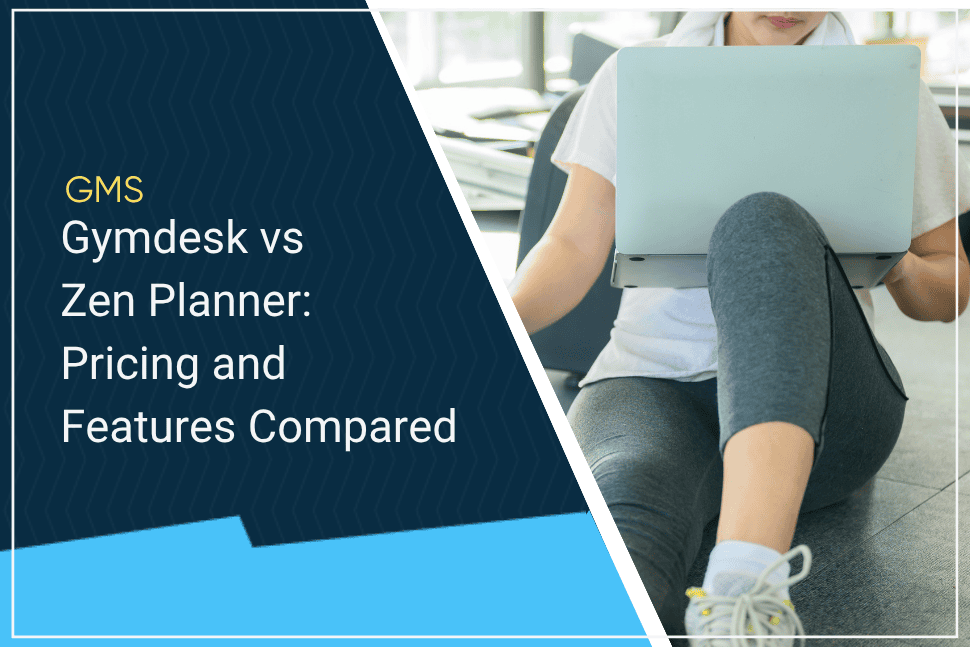CrossFit is for everyone.
Anyone can do CrossFit because every movement and workout can be scaled to match each individual’s capabilities and fitness level. You’ll hear this often when you join the CrossFit community, but you don’t always see it in practice.
Coaches and gym owners need to understand how to program CrossFit WODs for members who are injured or who fall into special populations, such as those living with disabilities. In this article, I’ll unpack how to do just that.
Who Should You Program WODs For?
In general, your gym should program workouts for the average athlete. As prescribed, WODs should be challenging but doable for a majority of your members. From there, your coaches can scale or modify workouts and movements to meet the needs of all your members.
If your gym offers classes to special populations, such as adaptive athletes or children, then you can program those classes accordingly. Sometimes, it is helpful for the employee creating the WODs to have additional education in those specialties.
How to Scale and Modify CrossFit WODs
Educate Coaches
Your coaches are your greatest asset when it comes to creating workouts that everyone can participate in. Part of the basic CrossFit education is learning how to scale and modify workouts. There are other educational courses available through CrossFit and other brands that educate trainers and gym owners on how to program and coach special populations.
Anyone working as a fitness trainer should have a basic understanding of anatomy and physiology. Understanding how muscles work together and impact different parts of the body is the core of fitness training. This knowledge base gives coaches the ability to modify movements while still optimizing the workout.
Understand Movement Progressions
Since CrossFit includes many complex movements, there are plenty of progressions available. Progressions are intermediate movements that help an athlete build up to a complex movement. Many people use these progressions to build up to hard movements, like handstand push-ups or muscle-ups. For injured athletes or special populations, steps in the progressions can be used in place of harder movements.
Some examples include:
- Pike push-ups (handstand push-ups)
- Ring rows (pull-ups)
- Air squat (weighted front squat)
- Step ups on a bench (box jumps)
Look at the Goal of the Workout
When choosing a modified movement for a member, coaches should do their best to keep the goal of the workout the same. For example, short WODs are typically sprints with light weights. If you are modifying the movements or amount of weight for an injured athlete, the goal should still be for them to be able to complete the workout quickly.
Other WODs focus on lifting the heaviest weight possible or focusing on certain muscle groups. Adaptive athletes or other special populations may not always have the same goal for a workout. As with any modifications, the choices are going to be individual to the member and their needs.
Common Modifications
Anyone doing physical activity, but most particularly special populations, should speak with their doctor about their workouts. CrossFit coaches are well educated, but they will never replace medical recommendations from a doctor. Trainers are able to prescribe workouts and movements that are appropriate for a member’s body and health status.
Injuries
Injuries happen. They can occur throughout daily life or during strenuous activities. Either way, most injuries require modified workouts for a period while they heal. With a doctor’s permission, CrossFit coaches can modify workouts so that a person can continue working out while they heal.
Depending on the location and severity of the injury, the modification could be minimal or drastic. For example, a broken foot may keep an athlete off their feet for a couple of weeks but a minor bicep strain can have little effect on daily life.
Usually, members with an injury will want to avoid using that body part. Coaches should choose movements for other muscle groups, slow down the speed of the workout, and decrease the weight as necessary.
Children
Many gyms participate in the CrossFit Kids program. Coaches are specially certified in CrossFit training for children. CrossFit coaches must be a current Level 1 Trainer or higher to complete the CrossFit Kids certification.
When it comes to children, not only are coaches programming workouts that are age-appropriate, but they also have to be appropriate for young attention spans. For younger kids, you’ll most likely want to include games, competitions, and silly activities to keep the kids engaged and motivated.
Children’s bodies are still growing. Their muscles and bones will continue strengthening until after puberty. Therefore, WODs for children should use lightweight and modified movements when necessary. Kids are naturally excellent gymnasts, so they tend to enjoy the fun body-weight movements.
Elderly
CrossFit is not just for young people, as evidenced by the Masters divisions at the CrossFit Games. Those athletes are not average people though. With current lifestyle trends, older people tend to suffer from mobility issues and lifestyle illnesses. Fitness can be a great way to stay healthy into your later years.
Modifications for elderly members will be based on the individual. Some may just move slower and use lighter weights. Those with arthritis or severe mobility constraints may benefit from seated movements and weights with comfortable hand grips.
This group can have the most drastic modifications from the original programming. The fact that they are still working out and taking care of their bodies should be celebrated, even if that means it takes a little more effort from the coach.
Adaptive Athletes
“Adaptive athlete” is a term used by CrossFit to describe a CrossFit participant with a disability that requires modification. Disabilities can vary wildly from person to person, so there is no set of standard modification guidelines.
Most importantly, your coaches should talk to any adaptive athletes. They know their body best and will be able to explain what they are capable of and where they need modifications or assistance.
Pregnancy
Barring any complications, most doctors allow low-risk pregnant patients to continue their current fitness routine as long as they feel good. However, pregnant members should always check with their doctor. Sometimes, doctors will recommend a maximum heart rate or weightlifting restrictions.
Usually, by the second or third trimester, abdominal exercises should be avoided or modified. As the pregnancy progresses, it can be harder for the member to lift heavy weights or move too quickly. Follow their lead and do not push them to go too heavy or too fast.
Don’t forget about postpartum members. Many women want to get back in the gym once they are cleared by their doctors. However, pelvic floor issues and diastasis recti are extremely common in postpartum women. Care should be taken to slowly increase the intensity of workouts and weight of lifts for the first year postpartum.
CrossFit does not currently offer a pregnancy and postpartum certification course. There are several other programs and certifications available to fitness professionals. You or one of your coaches may benefit from getting certified if you find that you have a lot of pregnant and postpartum women at your gym.
Final Thoughts
When it comes to creating WODs for injured members and special populations, personalization is key. There is no “one size fits all” modification program because every injury, disability, or situation is different. Make sure that your coaches are educated and experienced in modifying and scaling workouts for all athletes at your gym. Pursue additional education for special populations if you see the need to offer the best services to your members. Most of all, don’t be afraid to talk to your members about their specific needs and bodies. They know their body better than anyone else.
 Gym Owner Statistics: The State of Gyms, Member Trends, and Usage Data
Gym Owner Statistics: The State of Gyms, Member Trends, and Usage Data




 EN (English)
EN (English)
 JA (日本語)
JA (日本語)